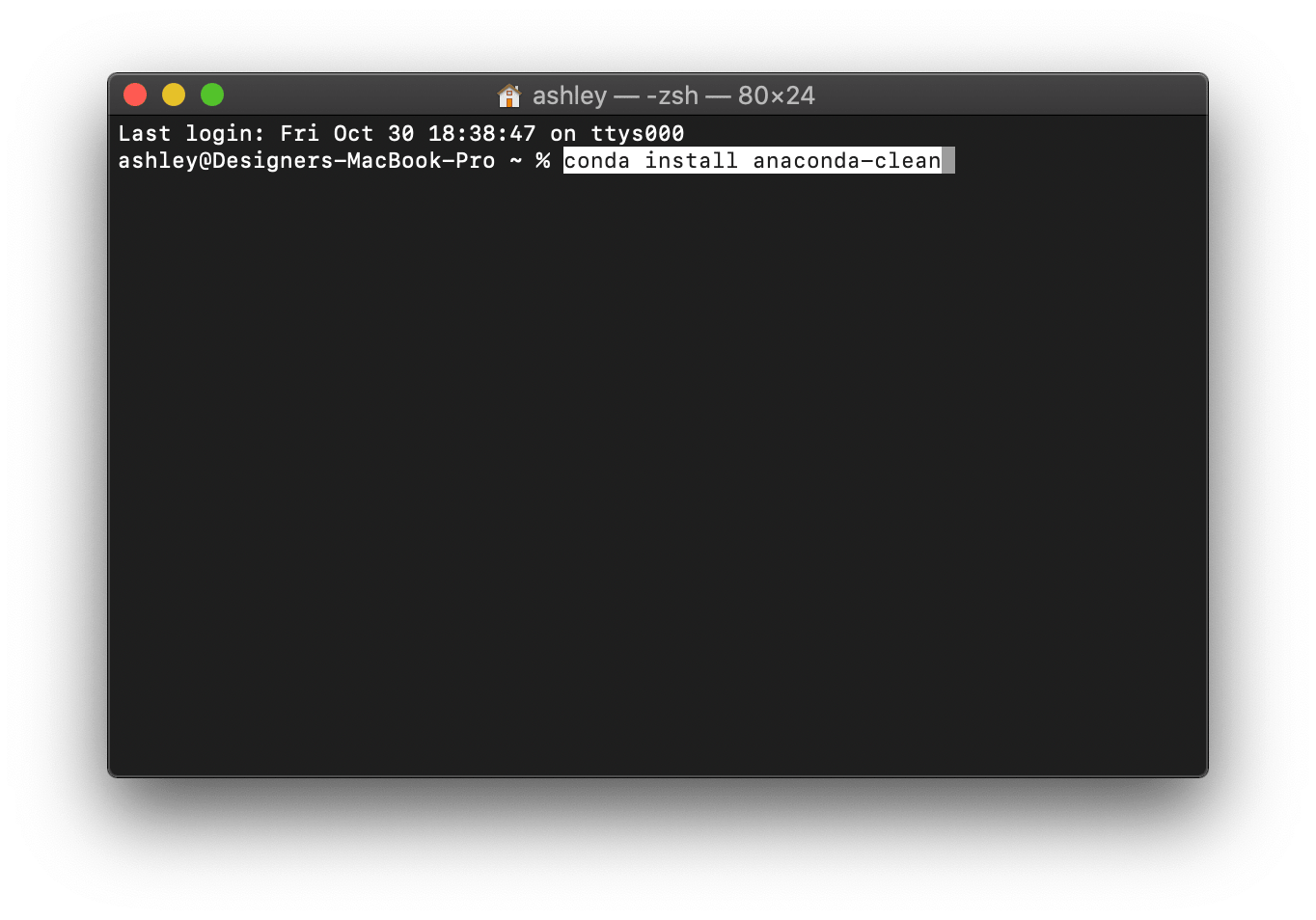
Anaconda is the Python distribution and the Anaconda Prompt is a command line shell (a program where you type in commands instead of using a mouse).
Steps to install anaconda for mac .exe#
exe installerĪt the commencement of the install, yous demand to click Next to confirm the installation.Īt the Advanced Installation Options screen, I recommend that y'all do not check "Add Anaconda to my PATH environment variable"Īfter the installation of Anaconda is complete, yous can go to the Windows get-go card and select the Anaconda Prompt.
Steps to install anaconda for mac download#
One time the download completes, open and run the. The download is quite big (over 500 MB) and so information technology may take a while to for Anaconda to download. Yous tin can still download Anaconda if you click and don't enter your Work Email accost. Y'all may exist prompted to enter your email. If you lot are unsure if your computer is running a 64-bit or 32-bit version of Windows, select 64-scrap every bit 64-bit Windows is most common. For problem solvers, select the Python iii.6 version. At the time of writing, the most recent release was the Python 3.6 Version. Select Windows where the three operating systems are listed.ĭownload the most recent Python 3 release. The Anaconda Downloads Folio will look something similar this: Open the Anaconda Prompt and run some Python codeīecome to the following link: /downloads These three packages are very useful for trouble solvers and will be discussed in subsequent chapters.įollow the steps below to install the Anaconda distribution of Python on Windows. Anaconda comes bundled with nigh 600 packages pre-installed including NumPy, Matplotlib and SymPy. Anaconda is gratuitous (although the download is large which can take time) and can be installed on schoolhouse or piece of work computers where you don't have administrator admission or the power to install new programs. I recollect the Anaconda distribution of Python is the best choice for problem solvers who want to apply Python. This section details the installation of the Anaconda distribution of Python on Windows 10. It will open in your default web browser. Installing Anaconda on Windows Installing Anaconda on Windowsįor trouble solvers, I recommend installing and using the Anaconda distribution of Python. Then, open a new notebook by clicking “New” in the top right. For beginners, we recommend having a single “Data Science” folder that you can use to store your datasets as well. Step 3: Open New Notebookįirst, navigate to the folder you’d like to save the notebook in. You’ll just need to paste in a token from the Command Prompt/Terminal. *Note: If you get a message about “logging in,” simply follow the instructions in the browser. You should see this dashboard open in your browser: Three cheers for synergy! To open it, run the following command in the Command Prompt (Windows) or Terminal (Mac/Linux):Īlternatively, you can open Anaconda's “Navigator” application, and then launch the notebook from there The good news is that Jupyter Notebook already came installed with Anaconda. (As an analogy, think of Excel as an “IDE for spreadsheets.” For example, it has tabs, plugins, keyboard shortcuts, and other useful extras.) An IDE is just a fancy name for an advanced text editor for coding. Jupyter Notebook is our favorite IDE (integrated development environment) for data science in Python. Or Simply download Anaconda with the latest version of Python 3 and follow the wizard: It’s the closest thing to a one-stop-shop for all your setup needs. The easiest way is to go through these two videos which will guide you to install Python.


Try this first since the very basic quality to become a data scientist is the ability to search the web and look out for solutions. There are a plethora of sources available on the web which will guide you on how to install Python via Anaconda. We strongly recommend installing the Anaconda Distribution, which includes Python, Jupyter Notebook (a lightweight IDE very popular among data scientists), and all the major libraries.


 0 kommentar(er)
0 kommentar(er)
